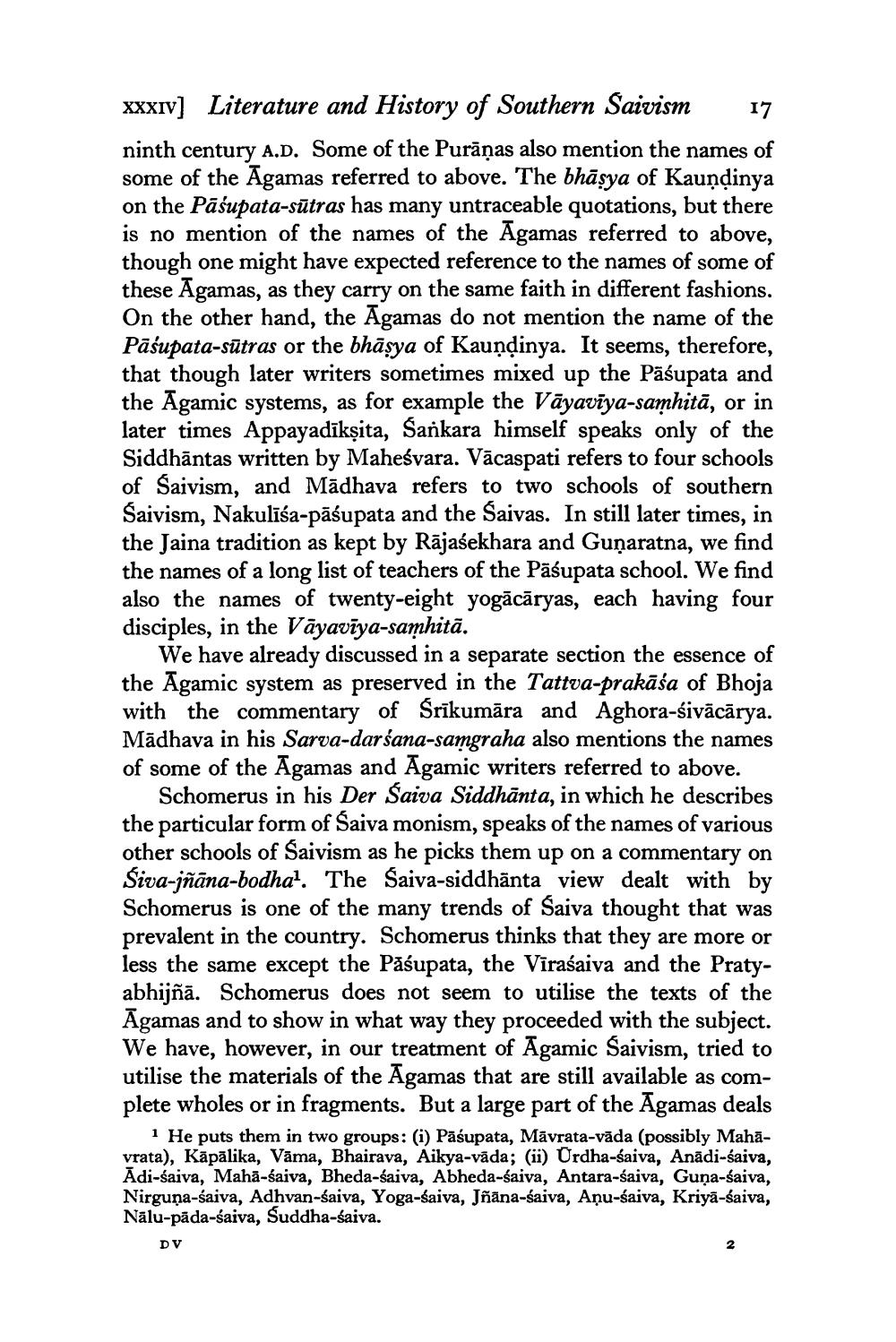________________
XXXIV] Literature and History of Southern Saivism 17 ninth century A.D. Some of the Purāṇas also mention the names of some of the Agamas referred to above. The bhāsya of Kauņdinya on the Pāśupata-sūtras has many untraceable quotations, but there is no mention of the names of the Agamas referred to above, though one might have expected reference to the names of some of these Āgamas, as they carry on the same faith in different fashions. On the other hand, the Agamas do not mention the name of the Pāśupata-sūtras or the bhāsya of Kaundinya. It seems, therefore, that though later writers sometimes mixed up the Pāśupata and the Āgamic systems, as for example the Vāyavīya-samhită, or in later times Appayadīkṣita, Sankara himself speaks only of the Siddhāntas written by Maheśvara. Vācaspati refers to four schools of Saivism, and Mādhava refers to two schools of southern Saivism, Nakulīša-pāśupata and the Saivas. In still later times, in the Jaina tradition as kept by Rājasekhara and Gunaratna, we find the names of a long list of teachers of the Pāśupata school. We find also the names of twenty-eight yogācāryas, each having four disciples, in the Vāyavīya-samhitā.
We have already discussed in a separate section the essence of the Agamic system as preserved in the Tattva-prakāśa of Bhoja with the commentary of Srikumāra and Aghora-śivācārya. Mādhava in his Sarva-darśana-samgraha also mentions the names of some of the Āgamas and Āgamic writers referred to above.
Schomerus in his Der Saiva Siddhānta, in which he describes the particular form of Saiva monism, speaks of the names of various other schools of Saivism as he picks them up on a commentary on Siva-jñāna-bodhal. The Saiya-siddhānta view dealt with by Schomerus is one of the many trends of Saiva thought that was prevalent in the country. Schomerus thinks that they are more or less the same except the Pāśupata, the Virasaiva and the Pratyabhijñā. Schomerus does not seem to utilise the texts of the Āgamas and to show in what way they proceeded with the subject. We have, however, in our treatment of Agamic Saivism, tried to utilise the materials of the Āgamas that are still available as complete wholes or in fragments. But a large part of the Agamas deals
1 He puts them in two groups: (i) Pāśupata, Māvrata-vāda (possibly Mahāvrata), Kāpālika, Vāma, Bhairava, Aikya-vāda; (ii) Urdha-saiva, Anādi-saiva, Ādi-saiva, Mahā-saiva, Bheda-saiva, Abheda-saiva, Antara-saiva, Guna-saiva, Nirguna-śaiva, Adhvan-saiva, Yoga-śaiva, Jñāna-saiva, Aņu-saiva, Kriya-saiva, Nālu-pāda-saiva, Suddha-saiva.
DV




